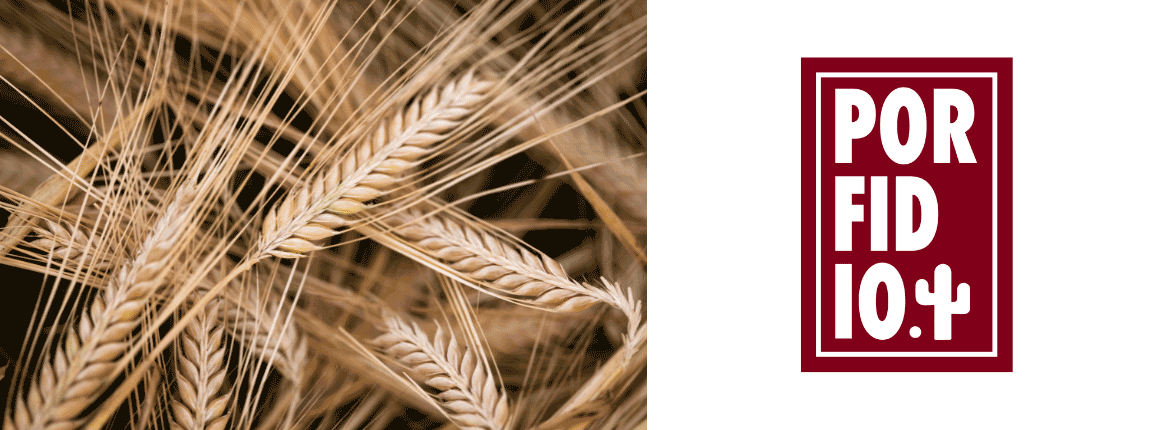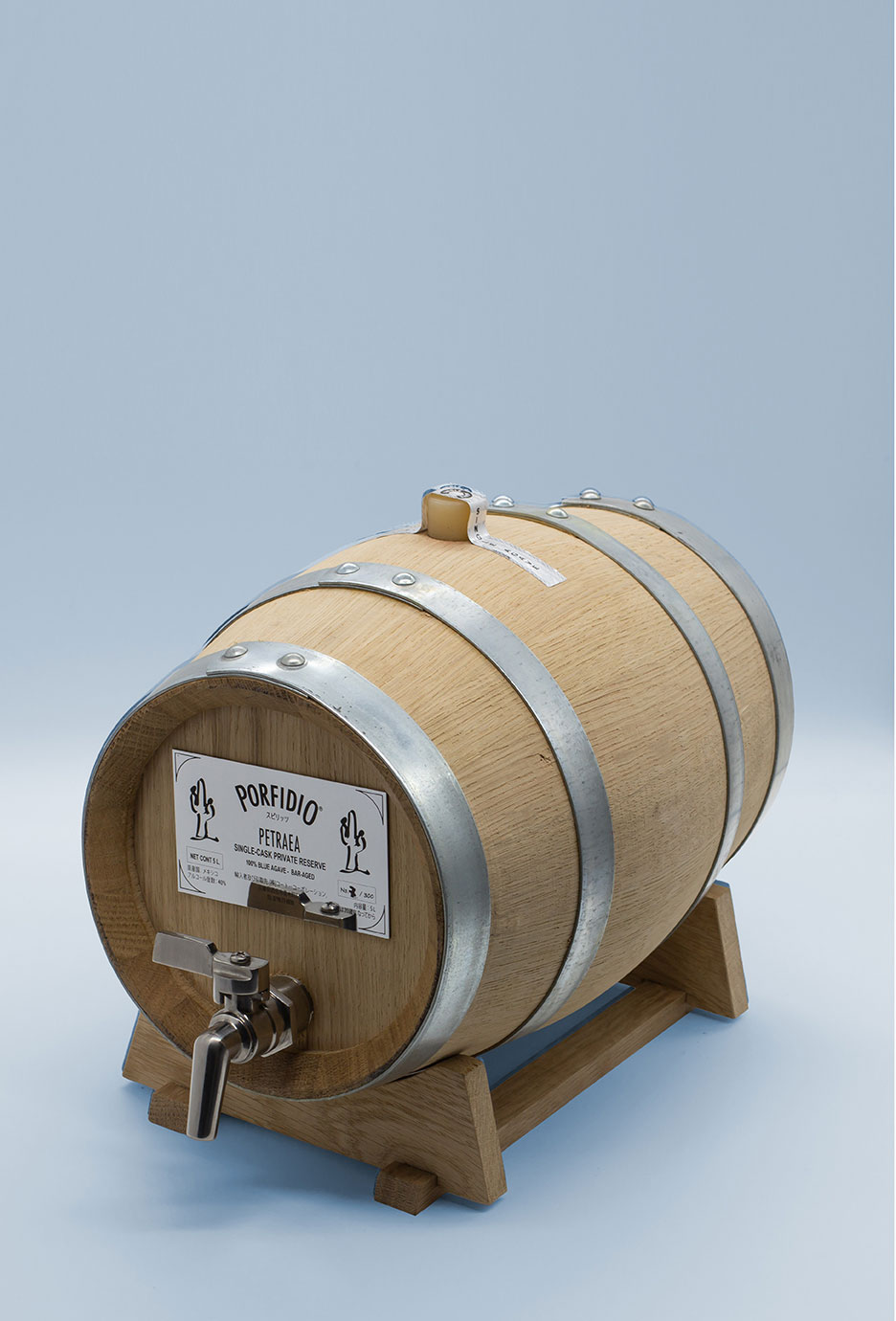
The Whisky Rebel.
True to the distinctive raw grain it’s made from, The.Barley.Tree is a single-varietal, single-estate, single-cask, single-terroir, Australian single-malt whisky that is made, only from 100% White Barley. That is just one reason it stands out from so many other whisky distillers today who have switched to cheaper grains like corn, wheat, rye, spelt, millet, oats, triticale, and even rice and sorghum. Aiming at a distinct and outstanding of flavor, by emphasizing the fruity notes that emanate from the White Barley varietal, the brand (part of Porfidio) distinguishes itself from classic Scotch whisky. As a key contribution to its distinct personality, this singular barley distillate is then seductively aged ageing in one-of-a-kind oak casks. Apart from its exceptional taste and impeccable ecological origins The.Barley.Tree also stands out for its original packaging and tasteful design.

Unlocking flavors
Emiliano Grassl, the brand’s founder and master distiller, sat with us to give us an intriguing insight into The.Barley.Tree. He began by sharing his inspiration with us, a passion for purity, sustainability, authenticity, veracity, historicity, and an unwavering commitment to Mother Nature. He explains that the brand is distilled in-house from small batches of sustainably and locally grown Australian white barley. “Then,” Emiliano adds, “I used proprietary yeasts that tease out the fruity aromas of the barley during fermentation (as opposed to standard whisky yeasts that with their dry flavor style). Next, looking for the right casks, I decided to mature my Single Malt in Australian barrels that previously matured Auscal, an Australian type of pure agave spirit, because I wanted to imbue the distilled white barley with a delicate accent of soothing agavaciousness.”
A serendipitous choice it was, since agave is one of the rare inulin plants that make distilled spirits. Emiliano explains: “Inulin, the main ingredient in agave juice, is much used today to give a touch of extra suavity to food, and by extension, the same applies to spirits - just like Scots use sherry-casks to age premium Scotch - but, with an Australian, agave-based twist! So, I could unlock uniquely delectable flavors through innovation. Combining my special yeasts and unique casks, I induced additional complexity, depth, distinctiveness, refinement, and smoothness.” Musing on his passionate deliberations, Emiliano asserts “For whiskies just as in winemaking, it’s all about introducing brand-specific stylistic accents as well.”
Catching the eye
The starting point in any spirited undertaking is, naturally, the distilled spirit. “Intrinsically, it is the Epicurean aspect, or taste, that attracts the consumers’ attention. Yet there is that other dimension, “the element of love at first sight,” or packaging, which is integral to a brand’s functionality, aesthetics, and tactility. All three need to be harmoniously reconciled with sustainability and social responsibility.”
For functionality, Emiliano singled out Miron glass for his whisky because of its bio-photonic properties. “Over years of liquid trials, bio-photonic glass has organoleptically shown to me its superiority over regular soda-lime glass to preserve the taste integrity of the distilled spirit it contains.” As Emiliano reminds us: “The rule that ‘all that glisters is not gold’ also applies to glass, because much of what consumers accept today as ‘black glass’ is, in fact, just transparent glass coated with black ink and so is not bio-photonic.”
For aesthetics, “I picked Miron’s ultraviolet glass, because, intriguingly, the human eye perceives it as “transparent black,” pleases the visual senses, and so working with Miron on my bottle killed two birds in one go: functionality and aesthetics.”
As for the tactility, Emiliano states: “Miron glass gives consumers a superior haptic feeling, because its perfume-bottle-grade glass quality smooths the mold lines and has an ultra-silky surface feeling upon touch, unlike ordinary glass.”
“For social responsibility,” Emiliano continues, “Miron was also a natural partner because skilled workers on sustainable salaries make their bottles in the E.U. under its high environmental standards, unlike most bottles now made in China or India by bend the standards. Social responsibility implies a willingness by the buyer to pay a premium for glass, something I willfully accepted.”
“For sustainability,” Emiliano says, “it is self-evident that glass containers objects are ideal for reuse, upcycling, or recycling. In summary, Miron checked all the right boxes for me, unlike most glass suppliers.”
Innovative design and packaging challenges
After choosing the glass Emiliano had to find a textured paper that was not only artisanal but also fully FSC compliant, which could be “printed” with environmentally safe inks. “Taking advantage of the reflective black background “canvas” that Miron glass offers the beholder, I achieved this by die-cutting the letters out of the paper, without using a single drop of ink,” Emiliano explains.
Finally, Emiliano had to create an environmentally sound screw cap. “Plastic was a definite no-go zone, and so I pioneered the idea of producing the caps from wood, yet not any wood, but from the oaks casks that had previously held the whisky within. For a touch of luxury, we then laser-engraved the oak caps.”
Honoring nature
Agriculturally, it’s all about sourcing local barley that does not need to be ferried across oceans and continents, and which is responsibly farmed, free of non-biodegradable synthetic pesticides.
But at the other end of the product cycle with packaging, Emiliano opted for upcycling, rather recycling, offering an empty bottle redemption value for bars, in collaboration with lightmybottle.at, an Austrian lamp company that transforms unique, previously used liquor bottles into wired table lamps.

